Handsome Tournai in the heart of French-speaking Wallonia may be famous for its UNESCO-listed cathedral but is more than a one-trick pony. This under-the-radar town has decent museums and superb historic churches and serves some of the tastiest beer in Belgium (and that’s saying something).
It’s an easy and rewarding day trip from Lille or Brussels but stay overnight to try a few of its excellent restaurants. Spend a day in Tournai exploring its ancient centre, taking in the must-see sights and experiencing its famous conviviality.

Some articles on this website contain affiliate links. This means that I may earn a small commission if you make a purchase through these links. As an Amazon Associate, I earn from qualifying purchases. Read the full disclosure here.
A Day in Tournai in a Nutshell
MORNING
- Cathédrale Notre-Dame
- Belfry
- Grand Place
- Saint-Quentin Church
- Saint-Jacques Church
AFTERNOON
- Red Fort
- Pont de Trous
- Place Verte
- Old Seminary
- Saint-Brice Church
- Town Hall
- Museum of Fine Arts (Musée des Beaux Arts)
What to See in Tournai
Cathédrale Notre-Dame
This vast medieval cathedral is Tournai’s calling card. Designated a UNESCO World Heritage site, it set the mould for cathedrals to come with its blend of early Gothic and Romanesque styles.
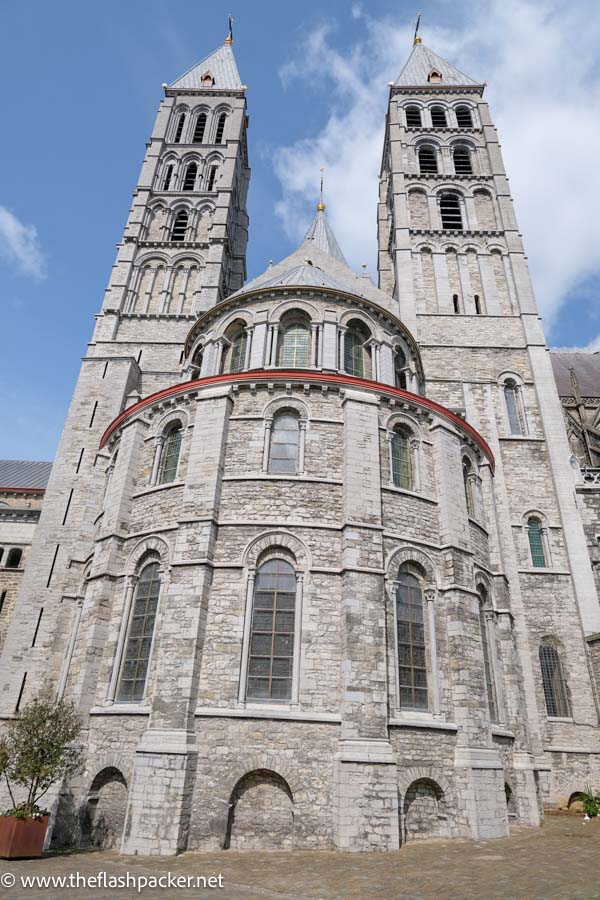
Tournai Cathedral was funded by the profits of the wool and stone trades and most of it was completed in the latter half of the 12th Century. Its beauty shines through the ongoing restoration work.
The soaring Romanesque nave has four levels and its capitals are decorated with intricate carvings of plants, animals and faces. Its choir introduced the Gothic style to Belgium and is fronted by a flamboyant Renaissance rood screen.
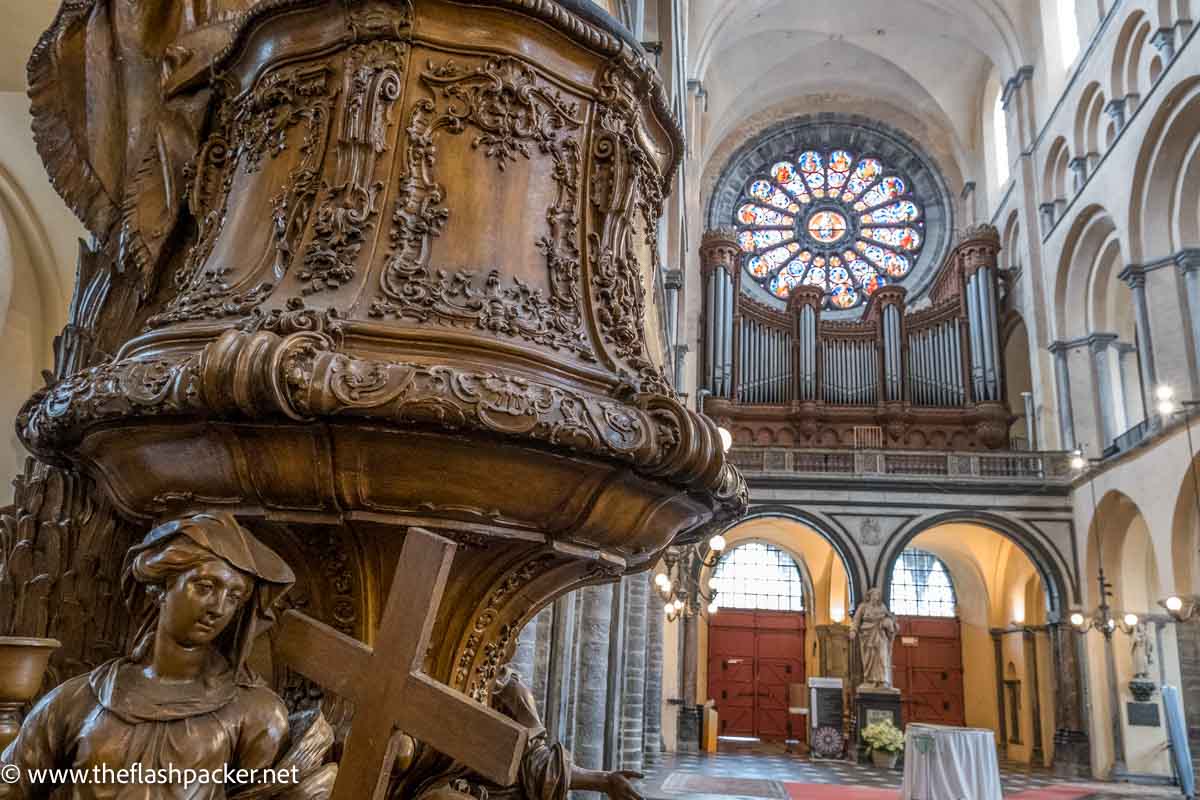
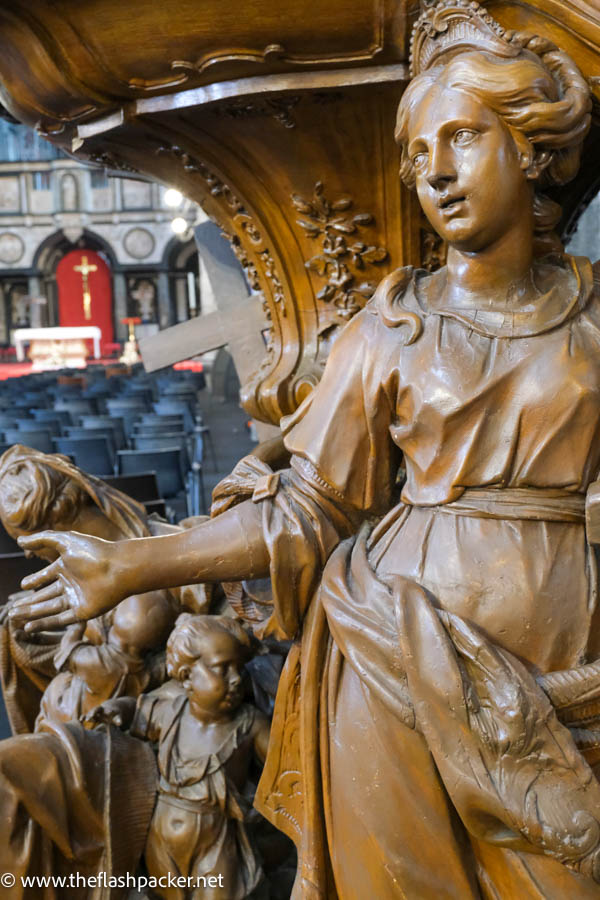
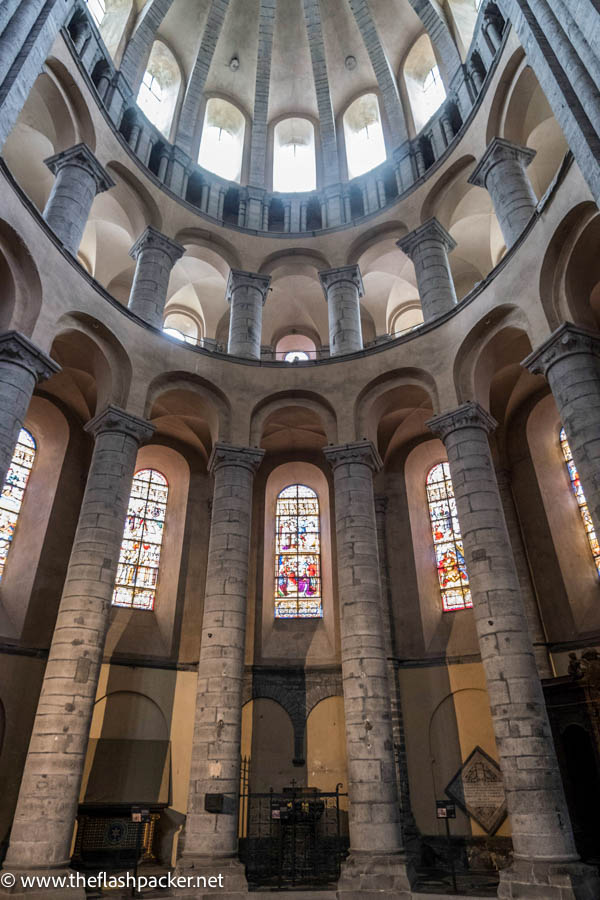
I loved the light flooding through the superb stained-glass windows in the south transept.
Although the cathedral is free to visit, there is a small charge to enter the treasury.
The Belfry (Le Beffroi)
Tournai’s UNESCO-listed belfry is the oldest in Belgium. The lower section dates from 1188 and once held a prison cell. Unusually, it is free-standing.
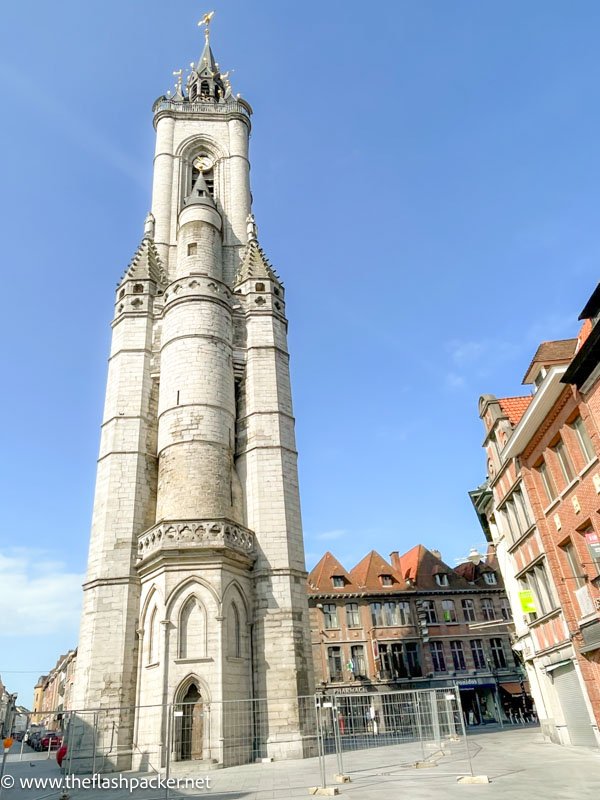
For a small charge, you can climb 142 steps to the panoramic terrace on the first floor (you can’t currently continue to the top of the belfry).
Grand Place
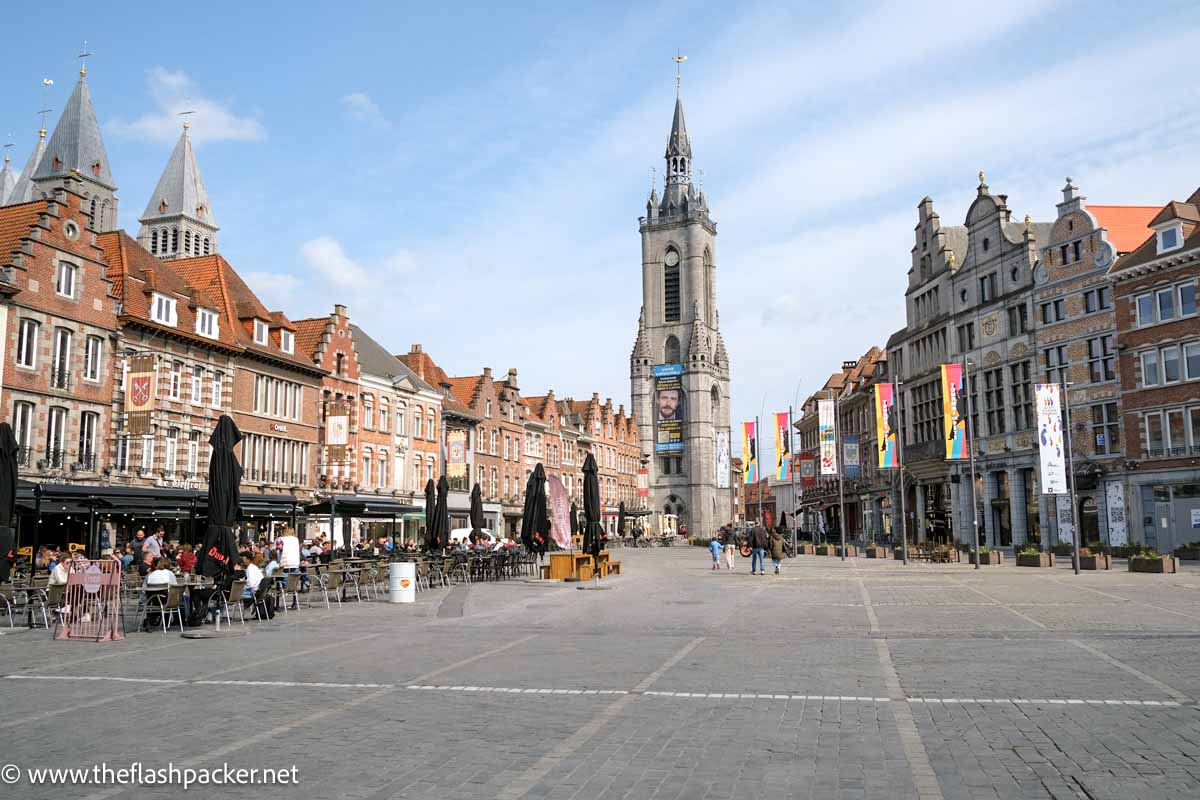
The Grand Place is Tournai’s magnificent sitting room.
At its centre is a statue of Christine de Lalaing, a local hero who led the defence against the Spanish Habsburg army in 1581. The perfectly symmetrical 17th-century Cloth Hall (Halle aux Draps) graces its southern side.
Saint-Quentin Church
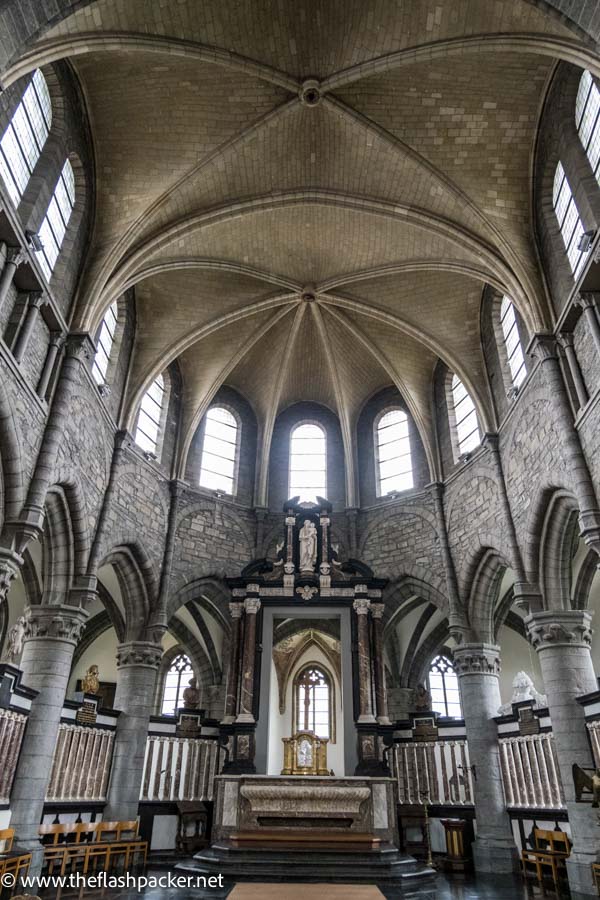
This graceful Romanesque church dates from the end of the 12th Century. Fun fact if you are an architecture fangirl or fanboy: its transept and choir mark the transition between the Romanesque and Gothic periods.
Saint-Jacques Church (Church of St James)
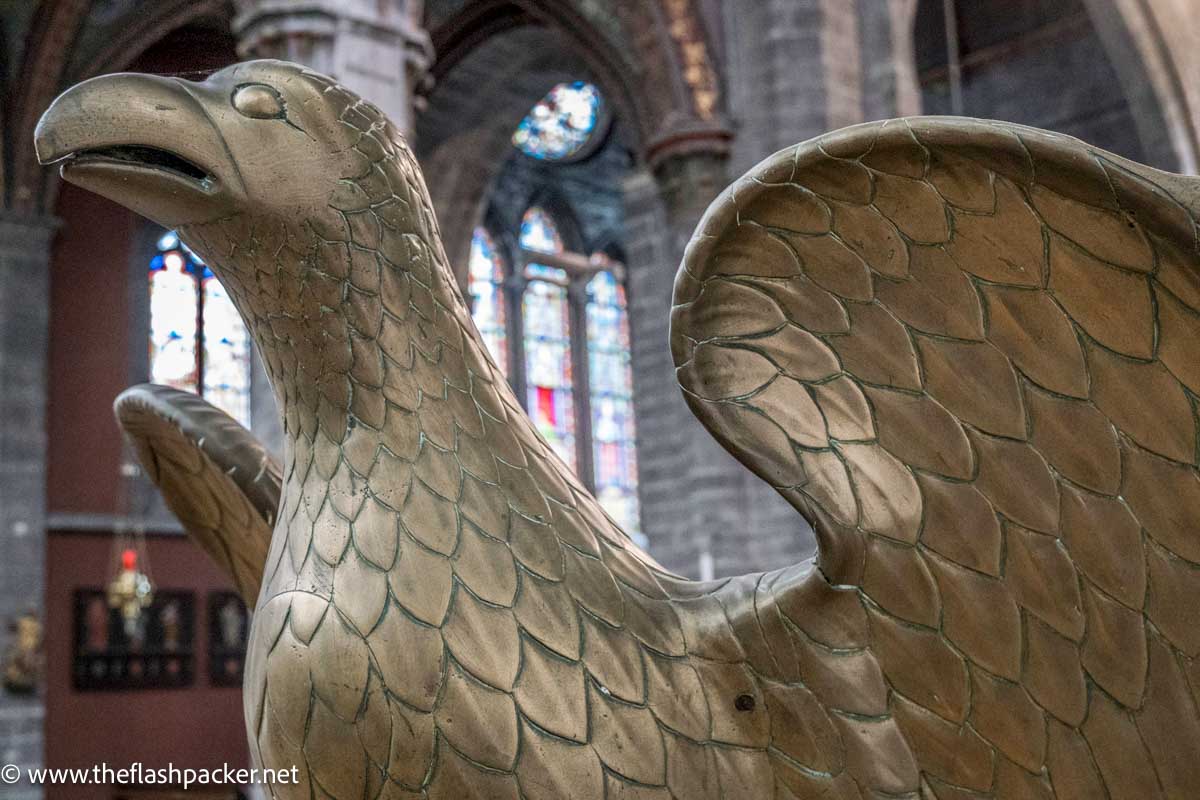
Saint-Jacques Church was built in the 12th Century along the pilgrimage route to Santiago de Compostela, dedicated to Saint James. It’s an art-filled beauty with Gothic features, 16th-century stained glass windows, a vault filled with musical angels and a magnificent brass eagle lectern.
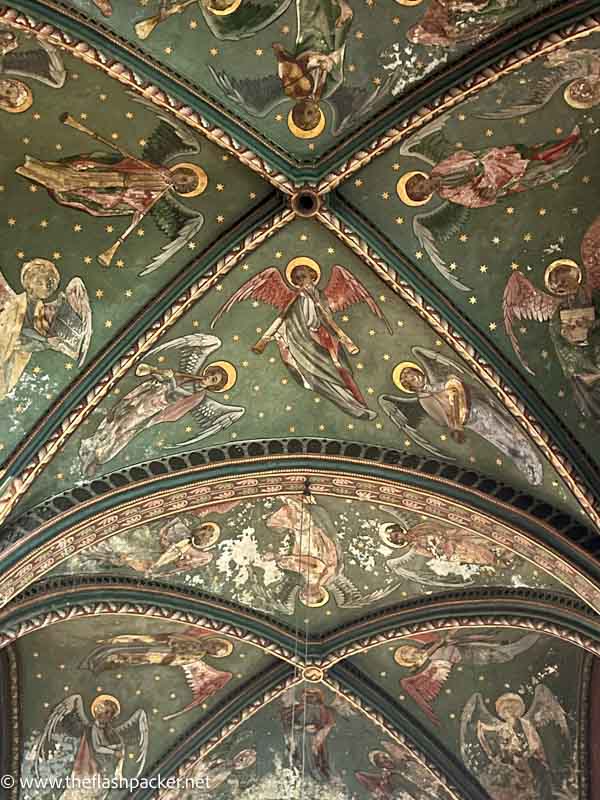
Red Fort (Fort Rouge)
This 17th-century fort was built under the direction of the famous French military engineer Vauban. It was part of a larger system of fortifications designed to protect Tournai, especially after the city was annexed by France under Louis XIV. Although much of the Red Fort has been dismantled or repurposed over the centuries, remnants of the original structure remain.
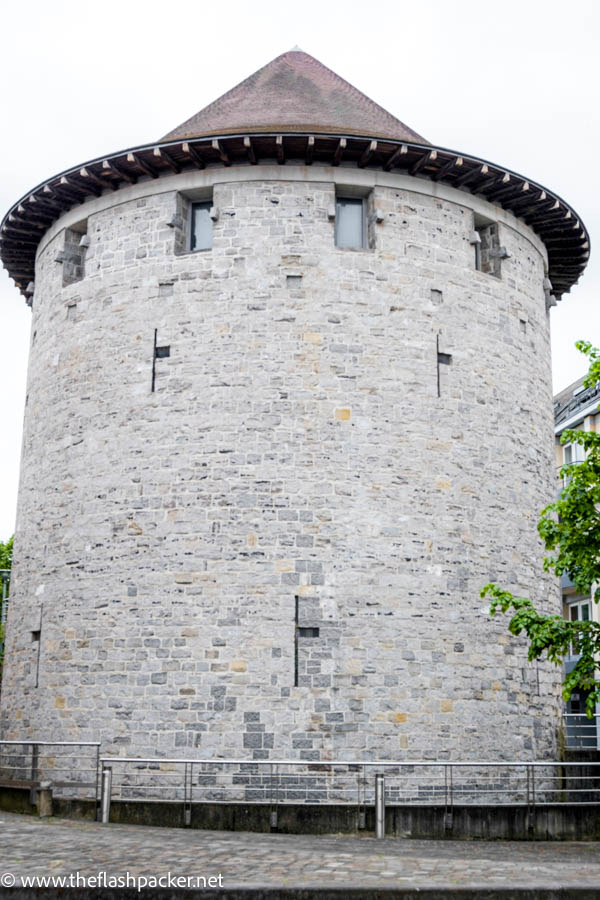
Pont de Trous
Once part of the city’s defensive fortifications along the Scheldt River, this impressive medieval bridge features large stone arches and fortified towers, designed to control river access and protect the city from invaders. It is considered one of the most remarkable examples of medieval military architecture in Belgium.
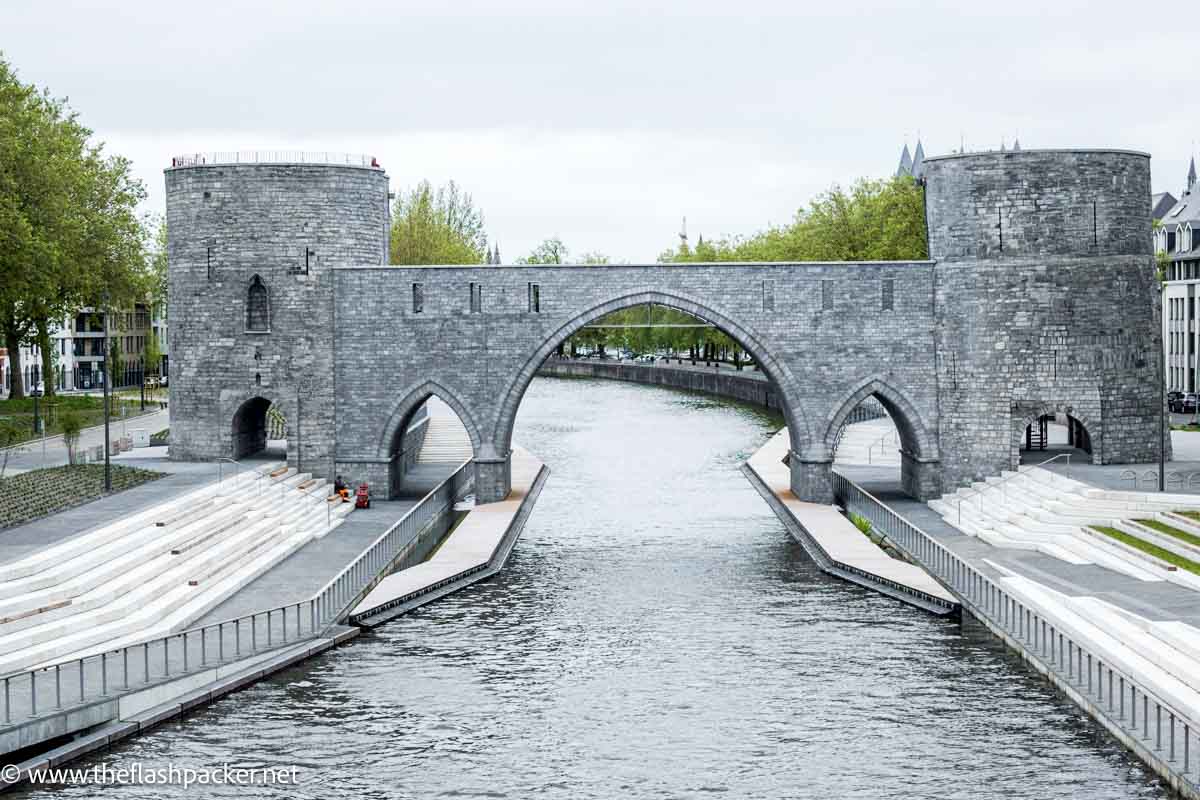
Place Verte
This tree-lined square was once home to Tournai’s livestock. It is close to Henri VIII Tower (Tournai was briefly ruled by the English between 1513 and 1518).
I was underwhelmed by Place Verte but it is worth visiting to see the nearby Art Nouveau houses.
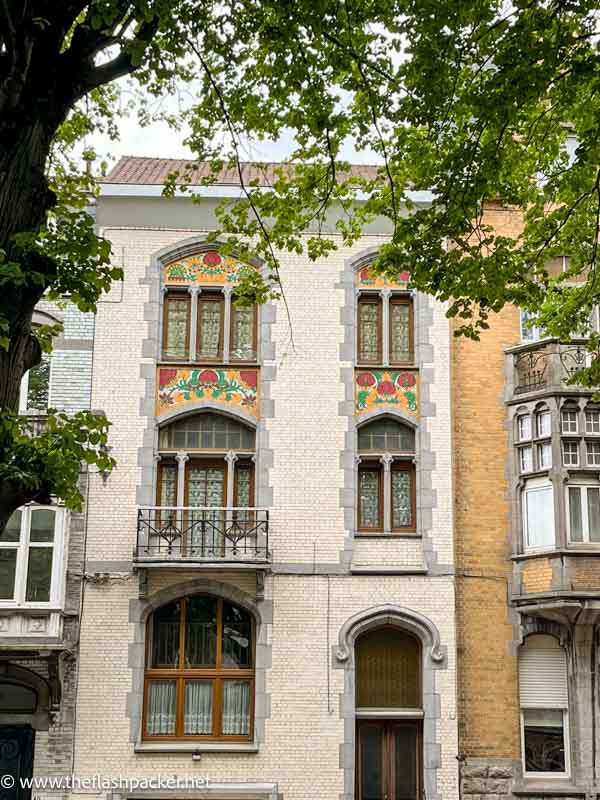
Saint-Brice Church
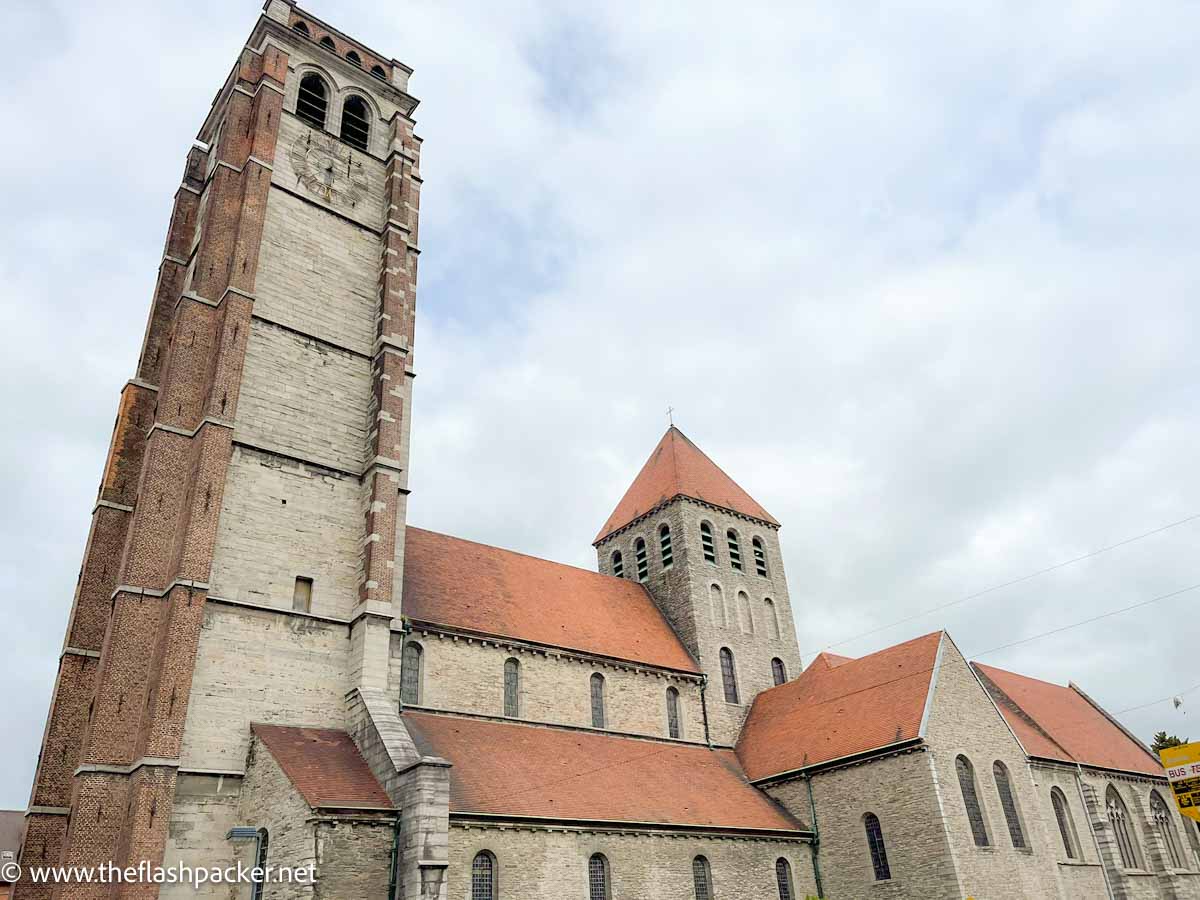
Understated Saint-Brice Church is believed to be near the burial site of Childeric I, a 5th-century king of the Franks and father of Clovis I, the founder of the Merovingian dynasty. It is an early example of hallekerke construction, featuring three naves of equal height.
Old Seminary (Ancien Séminaire)
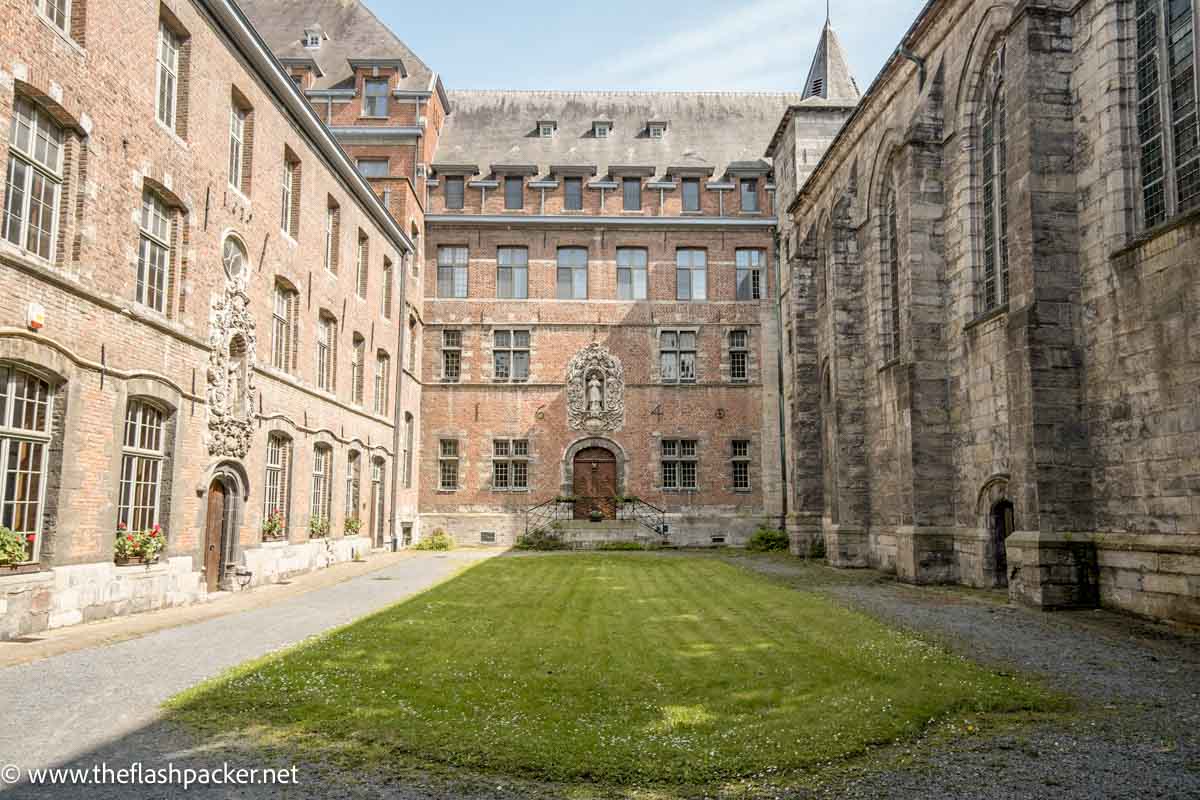
Tournai’s first seminary was built between 1683 and 1692 following an order from the Council of Trent to establish training colleges for future priests. Showcasing Classical and Baroque architectural styles, this Tournai landmark has been an orphanage and a hospice. It is now the Julien Wlomainck Centre, devoted to social housing.
Town Hall (Hôtel de Ville)
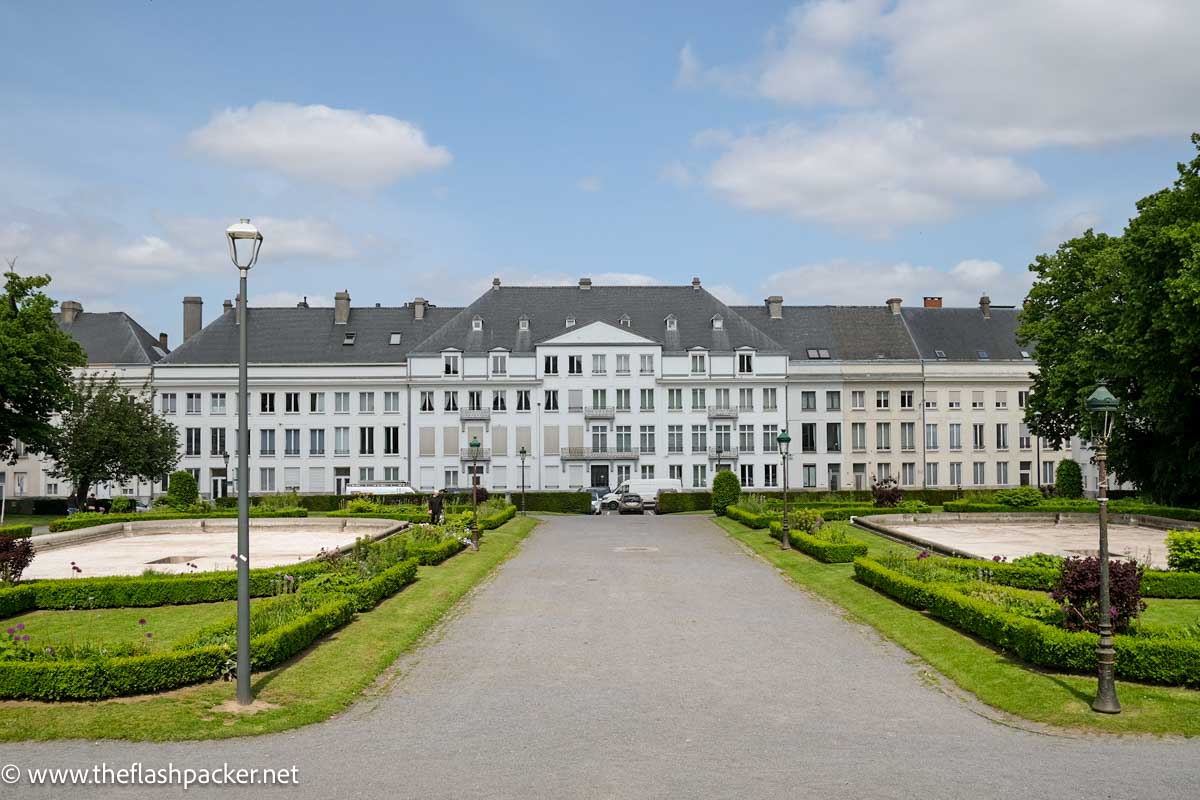
Built on the site of a former Benedictine abbey, Tournai’s elegant Town Hall is set in a lovely park with gurgling fountains. A restored medieval cellar is beneath the building.
Museum of Fine Arts (Musée des Beaux Arts)
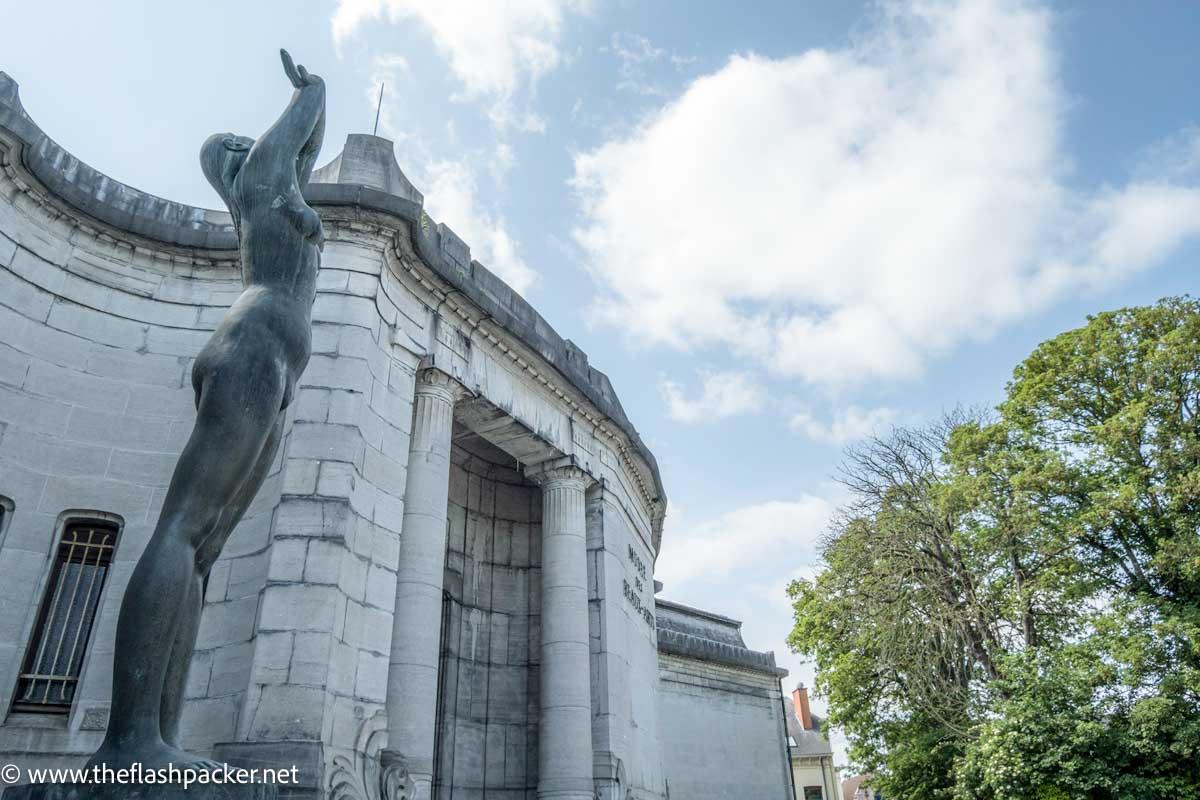
Housed within a Victor Horta Art Nouveau building, Tournai’s number-one museum has a small collection of mainly Belgian paintings and the only two works by Manet on display in Belgium. There are also works by other Impressionists, including Monet, Van Gogh and Seurat.
Getting There & Getting Around
Tournai is one hour by train from Brussels and 30 minutes from Lille (I stopped in Tournai en route from Ostend to Lille). Check timetables and prices at Omio.
From the UK, Lille is 1 hour 20 minutes by train from London St. Pancras International. Treat yourself to Eurostar Standard Premier Class for an affordable splurge.
Tournai is a walkable city. You won’t need to use public transport.
Where to Stay
I loved my stay at ONIRO. The owners were super friendly and helpful, the room had a spa bath and the breakfast was awesome.
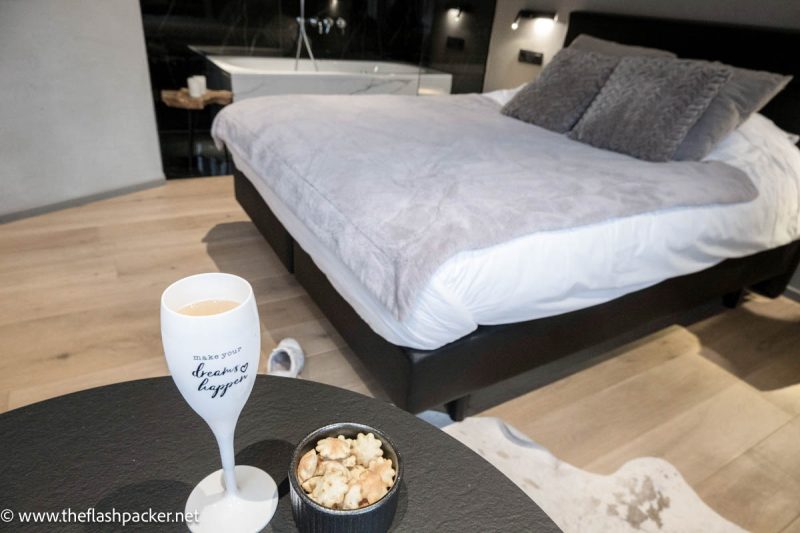
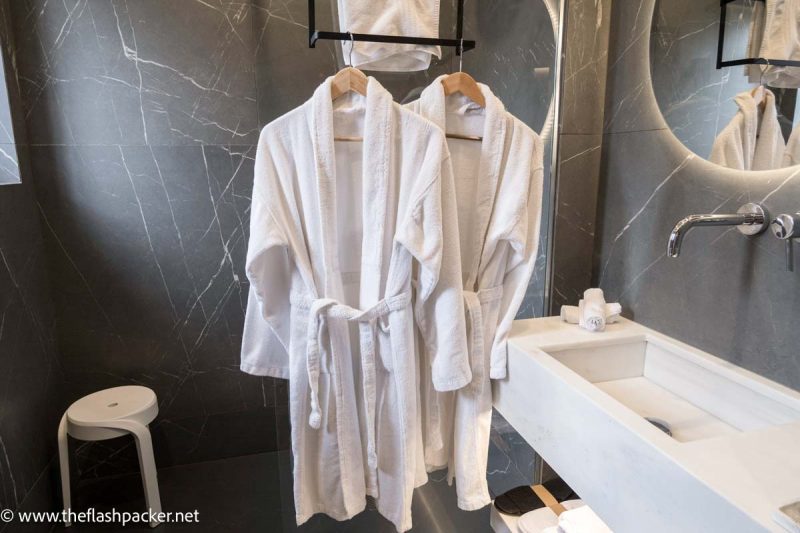
If you don’t fancy the ten-minute walk to the Grand Place, take a look at Hotel d’Alcantara. As Tournai is not flush with places to stay, book in advance.
Where to Eat
I recommend eating at L’Imperatrice at 12 bis rue des Maux
This friendly joint which serves tasty, unpretentious food and excellent local beers. The St Martin beer was worth it if only for the glass it came in.
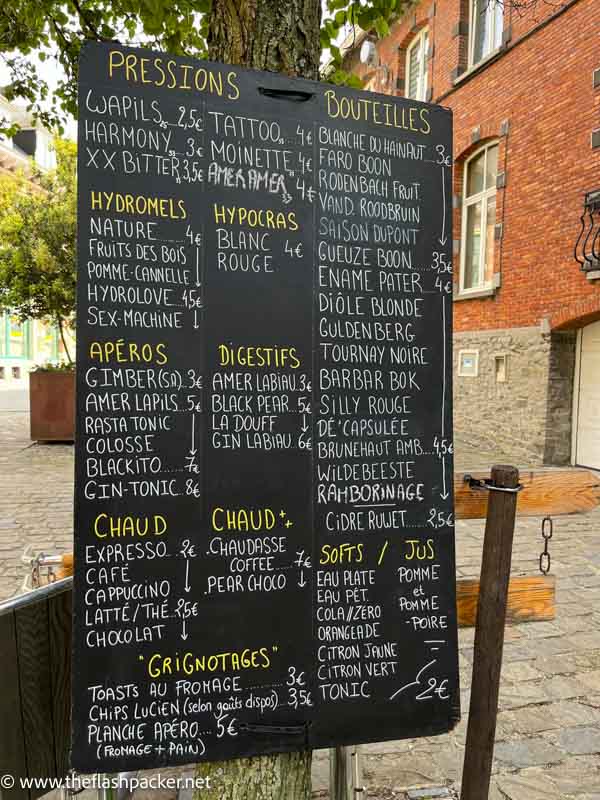
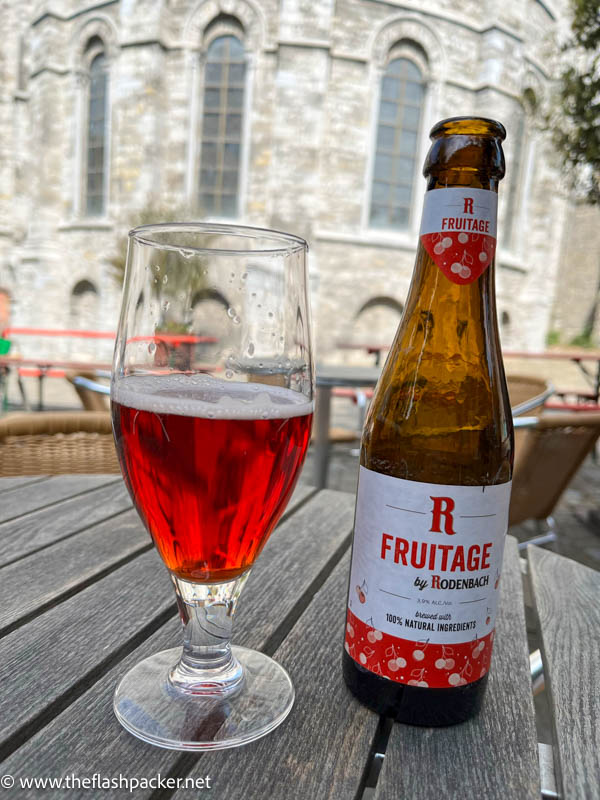
Where to Next in Belgium?
I hope that you enjoy your day in Tournai. It’s a satisfyingly sleepy place and well worth visiting.
If you have found this helpful, take a look at my other Belgium guides before you leave, including this one-week Belgium itinerary.
BRUSSELS: Discover what to do in Brussels and spend one day in Mechelen.
GHENT: Get the lowdown on Ghent’s must-see attractions and the best areas to stay in Ghent. Take a day trip to find Bruges’s best chocolate shops.
LEUVEN: Find out what to do in Leuven and relax in the oldest botanical garden in Belgium.
HASSELT: I spill the beans on why I loved Hasselt, not least because it’s home to the Jenever Museum.
DINANT & NAMUR: Discover the best things to see in Namur and how to spend a day in Dinant. Tight on time? Here’s how to decide between Dinant and Namur.
OSTEND: Learn about the best things to do in Ostend.
Happy travels!
PS. If you’ve found this Tournai guide helpful, Pin it to read later!
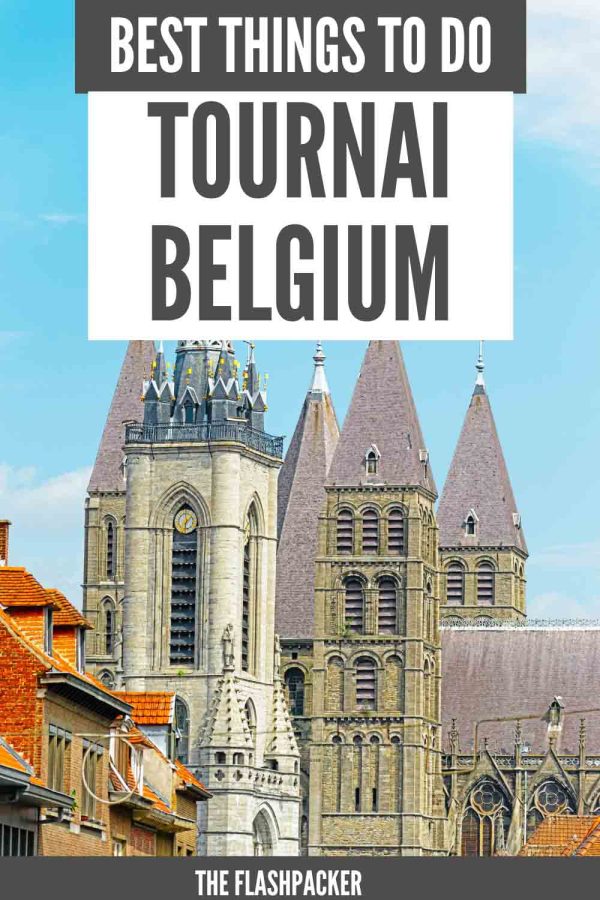
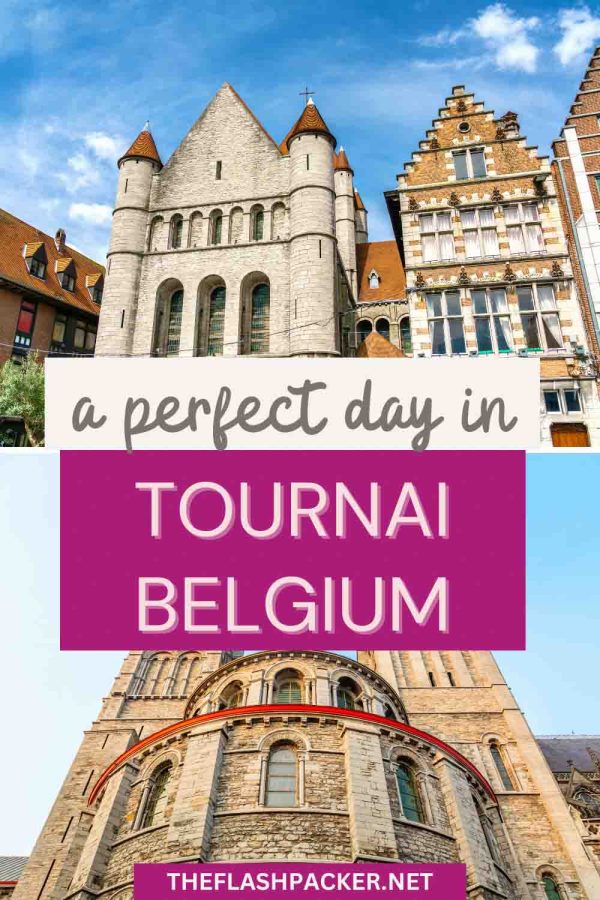

About Bridget
Bridget Coleman has been a passionate traveller for more than 30 years. She has visited 70+ countries, most as a solo traveller.
Articles on this site reflect her first-hand experiences.
To get in touch, email her at hello@theflashpacker.net or follow her on social media.
